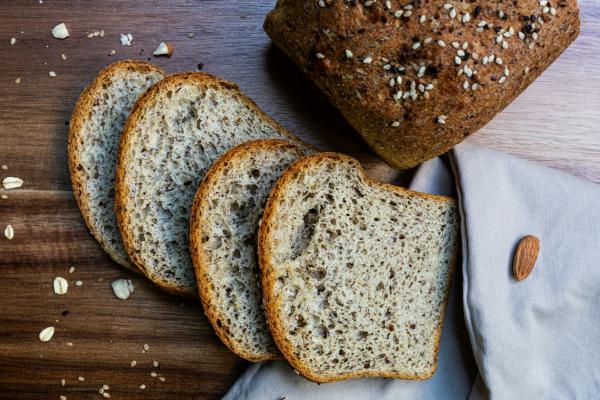


Bread is a universally enjoyed food worldwide, but its carbohydrate content derived from wheat does not align with a no-carb or ketogenic lifestyle. That’s where low-carb bread comes in. There has been a growing demand for bread alternatives that provide the flavors and textures we enjoy without the carbohydrates.
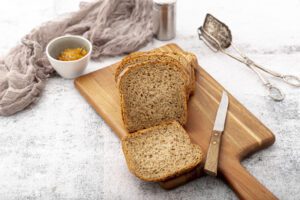
No carb bread provides a solution for individuals looking to reduce their carbohydrate intake and support their health goals. This article will explore the science behind low-carb bread and compare it to regular bread. We will cover the various low-carb bread options available on the market and provide homemade recipes. Reviews of the best no-carb vegan bread brands and meal ideas for incorporating bread into your daily keto diet plan will also be included. By the end, you’ll be excited to embrace the world of low-carb bread!
To understand how no-carb bread works, it’s important to understand what makes regular bread high in carbohydrates. Traditional wheat bread gets its texture and structure primarily from gluten.
Gluten is the elastic protein that forms when wheat flour is mixed with water or other liquids. It allows bread dough to trap air bubbles and rise nicely.
However, gluten also contributes to the carbohydrate count of bread. Each slice of regular wheat bread contains anywhere from 15-30 grams of carbohydrates, depending on size. Much of this is due to the starchy carbohydrates found in wheat flour.
So, how do you make bread without wheat flour and its carbohydrates? This is where the science behind low carb vegan comes in. Key ingredients and techniques used include:
Low-Carb Flours: Almond flour and coconut flour are popular substitutes for flour. They contain minimal carbohydrates but still provide structure and moisture when baked.
Binders: Additional ingredients like psyllium husk help bind mixtures without gluten. This process allows the bread to rise and take shape in the oven.
Leavening: Chemical liveners, such as powder, are used for rising instead of relying on gluten networks.
Techniques: Longer rise times and careful, precise measurements in lighter, fluffier bread textures without wheat.
By removing gluten while still achieving rise and structure, no-carb bread recipes replicate regular bread quality in a carbohydrate-reduced format. Understanding the science behind it makes it easy to see how no-carb bread became a staple for low-carb diets.
With various types of flour and different structures, how does no-carb bread compare to wheat bread? A taste test reveals that while it may not be perfectly identical, it comes very close. Many low-carb vegan bread varieties taste subtly nutty or eggy rather than starchy, but they still satisfy cravings for toast, sandwiches, or bread-based dishes.
When toasted, no-carb loaves can achieve a similar pillowy softness on the inside with a thin, crisp crust. Some recipes have denser, bread-like textures, while others have a cakey or muffin-like feel.
Consumers need to experiment to find their favorites. Most people find that the taste and texture of low carb vegan bread are satisfying without causing a spike in blood sugar levels, unlike wheat bread.
Thanks to the creativity of low-carb bakers, numerous options are now available for finding the perfect no-carb bread. Here are some of the top varieties:
SANDWICH BREAD: Fluffy sliced loaves for everything from grilled cheese to sandwiches.
WRAPS AND TORTILLAS: Versatile low-carb wrap options include burritos, tacos, and pizza
BAGELS AND BUNS: Savory, sweet, low-carb flavors. Cauliflower Bun Recipes
FLAKED FLATBREADS: crackers and flatbreads like naan
SPECIALTY BREADS: Rye, pumpernickel, English muffins, etc. Gluten-free and low-carb options are also available.
With so many options available, it’s easy to satisfy your craving for bread while still following a low carb vegan diet.
No-carb bread adds versatility and satisfaction to any diet. Here are some ideas:
Breakfast: Options include toast, pancakes, strata bakes, bakes, and sandwiches.
Lunch: Sandwiches with lean turkey, tuna salad, or grilled vegetables
Snacks: toast with nut butter or avocado, bruschetta, pizza pinwheels
Dinner: options: hot dogs on buns, stuffed peppers, taco bowls
Dessert: Bread pudding, berry crisp, Panzanella salad
Moderation is key, but having no-carb vegan bread can make low-carb meals more enjoyable and satisfying while maintaining balance. Whether preparing meals from scratch or relying on store-bought staples, no-carb bread satisfies the need for versatility in any diet.
With the abundance of amazing no carb bread options, you never have to feel deprived of enjoying your favorite bread again. Whether baking homemade loaves fresh from the oven or relying on top-rated store brands, low-carb bread delivers wholesome nutrition, variety, and the satisfaction we crave from bread. No-carb bread enhances the body and soul as part of a balanced low-carb lifestyle. So, expand your culinary horizons; the world of low-carb vegan bread awaits!
Here are some frequently asked questions about the nutrition of no-carb bread answered:
Most commercial and homemade no-carb bread varieties contain around 2-4 grams of total carbohydrates per slice. By subtracting fiber from total carbs, the resulting net carbs are often only 1-3 grams per slice.
Yes, as long as you stay within your daily carbohydrate limit, typically around 20–30 grams of net carbs for achieving nutritional ketosis. No-carb bread easily fits into a low-carb or keto lifestyle at 1-3 grams of net carbs per slice.
No-carb bread is higher in protein and fat than regular bread due to the use of ingredients such as almond flour and eggs in its recipes. A slice provides an average of 3-5 grams of protein and 3-6 grams of healthy fats.
While denser and more calorie-dense than regular bread, no-carb bread is still a reasonable option for those watching their calorie intake. Most slices contain 70–120 calories, depending on the specific recipe or brand.
The texture may not be identical to wheat bread for some individuals. The taste also varies among brands. Some are sweeter, while others are more neutral. Overall, though, no-carb bread provides an easy solution for those avoiding grains, whether for sandwiches or toast.
With the proper macronutrient information, low carb vegan bread is a versatile and low-carb staple. Let’s move on to some additional recipe ideas.








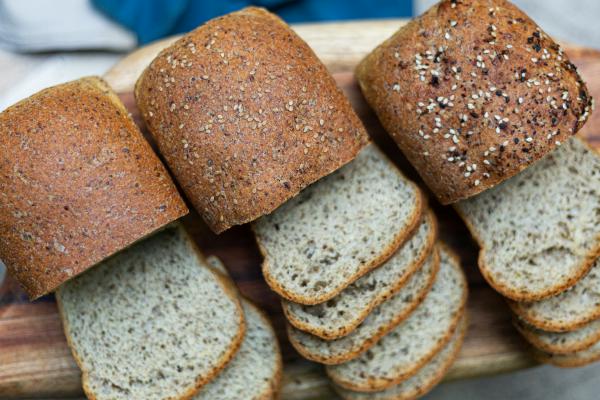


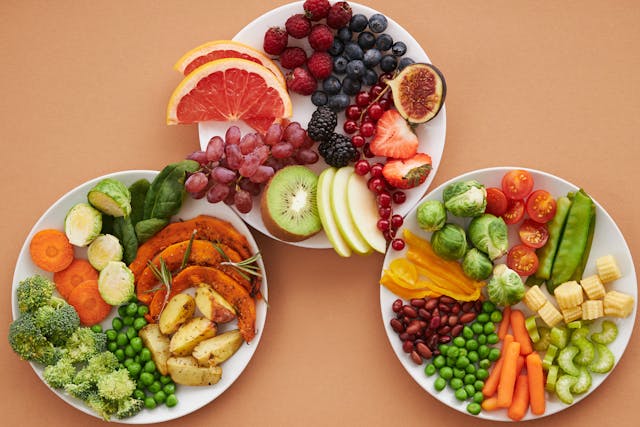






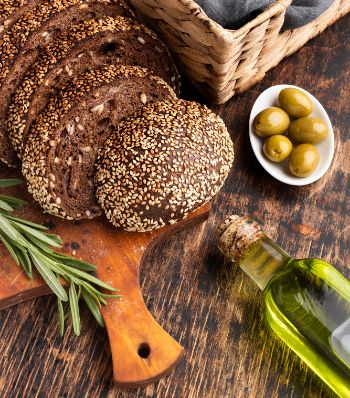

Sign up below to receive exclusive deals and be first to know when delicious new products are coming out.